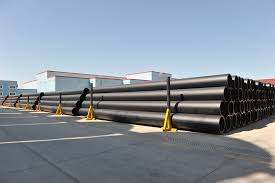Jul . 25, 2024 05:50 Back to list
Manufacturer of PPR Pipes for Efficient Chilled Water System Solutions and Applications
PPR Pipe in Chilled Water Systems A Manufacturer's Perspective
As industries and urban infrastructures increasingly prioritize efficient and sustainable solutions for water management, the role of PPR (polypropylene random copolymer) pipes in chilled water systems has become increasingly significant. Known for their exceptional durability, resistance to thermal fluctuations, and ease of installation, PPR pipes have emerged as a leading choice for chilled water applications across various sectors, including commercial buildings, industrial facilities, and district cooling systems.
Advantages of PPR Pipes
One of the most appealing features of PPR pipes is their outstanding thermal insulation properties. This characteristic is essential in chilled water systems, where maintaining low temperatures is crucial for system efficiency. The minimal thermal conductivity of PPR helps prevent heat transfer, ensuring that the chilled water remains at the desired temperature, thereby reducing energy consumption and enhancing system performance.
Furthermore, PPR pipes are resistant to corrosion and scaling, common issues that can compromise the longevity and efficiency of other piping materials, such as metal pipes. This resistance is particularly beneficial in chilled water systems, where water treatment chemicals might be used. The durability of PPR pipes translates to lower maintenance costs and longer service life, making them a cost-effective option in the long run.
Environmental Sustainability
As the world shifts towards more eco-friendly building practices, the materials used in construction and infrastructure demand closer scrutiny. PPR pipes are manufactured with a lower environmental impact compared to traditional materials. Their production process consumes less energy, and they are fully recyclable, contributing to a circular economy. By choosing PPR pipes for chilled water systems, manufacturers not only meet regulatory standards but also contribute to sustainability goals.
Installation and Maintenance
ppr pipe for chilled water system manufacturer

Another advantage of PPR pipes is their lightweight nature, which simplifies transportation and installation. Unlike heavier materials like metal, PPR pipes can be handled easily by a smaller workforce, reducing labor costs and installation time. The connection methods used for PPR pipes, such as heat fusion welding, result in seamless joints that eliminate the risks associated with leaks often found in threaded or glued connections.
Moreover, the maintenance of PPR pipes is straightforward. Regular inspections are all that is needed to ensure optimal performance, as the materials resist many of the stressors that typically degrade piping systems over time. This reliability further strengthens the case for using PPR pipes in chilled water systems.
Challenges and Considerations
Despite their many advantages, manufacturers must consider certain challenges when integrating PPR pipes into chilled water systems. For instance, while the temperature range for PPR pipes is suitable for chilled water applications, they may not tolerate extremely low temperatures without specialized adjustments. Thus, careful planning during system design is essential to address any potential issues related to ambient temperatures and thermal expansion.
Additionally, while PPR pipes are highly resistant to corrosion, they can be susceptible to UV degradation if exposed to sunlight. Therefore, proper insulation or burial of the pipes is crucial in outdoor applications to enhance their lifespan.
Conclusion
In summary, PPR pipes are a formidable choice for manufacturers looking to implement efficient and sustainable chilled water systems. Their thermal efficiency, corrosion resistance, ease of installation, and low environmental impact make them ideal for modern applications. As industries continue to innovate and demand smarter solutions, PPR pipe technology will likely play a pivotal role in shaping the future of chilled water systems. Manufacturers that recognize and leverage these advantages will not only meet the current demands but also set the benchmark for future developments in water supply and management solutions.
-
HDPE Electrofusion Fittings Durable, Leak-Proof Conduit Solutions
NewsMay.31,2025
-
HDPE Compression Fittings Leak-Proof, Corrosion-Resistant Solutions
NewsMay.31,2025
-
Premium PP & HDPE Compression Fittings Leak-Proof & Durable Solutions
NewsMay.30,2025
-
HDPE Tee Fittings 48-Inch HDPE Pipe Solutions & Cost-Effective Services
NewsMay.30,2025
-
HDPE Compression Fittings Durable & Leak-Free Pipe Connectors
NewsMay.29,2025
-
HDPE Tee Fittings 48-Inch HDPE Pipe Cost & Factory Services
NewsMay.29,2025

